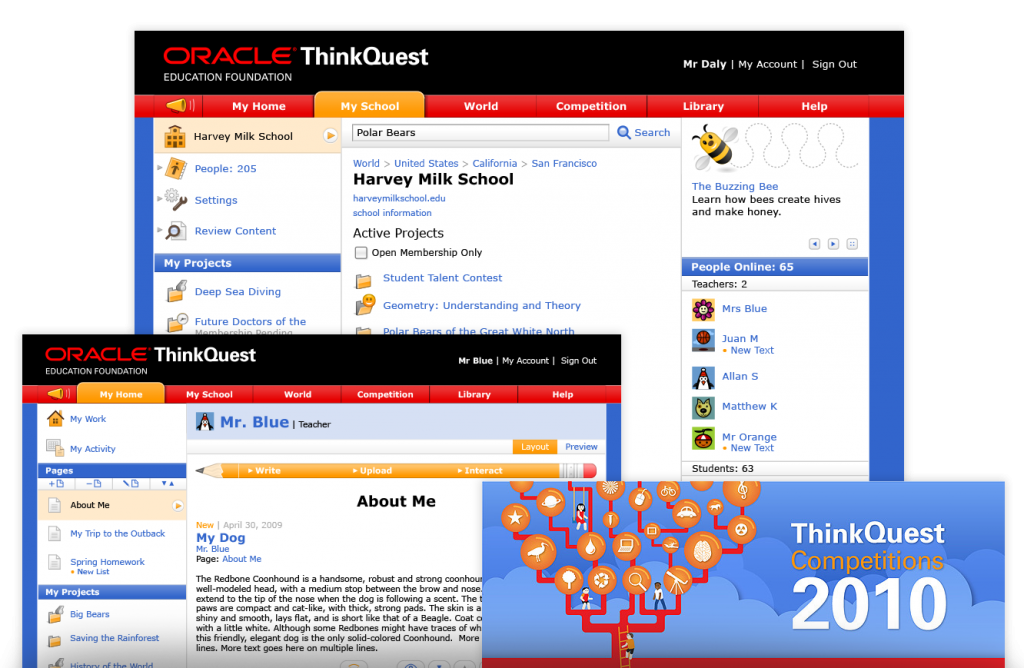Designing for Something that Won't Sell
Why UX also needs to go where most people don't want to go

Photo by Jordan McDonald
Back in the year 2010, I was working for Oracle, designing e-learning products for schools. Back then, my job title was only “Designer”, I just started my career. Half of my work was marketing design, the other half user interface for these products. The products that we designed facilitated learning in the classroom (and off the classroom), by allowing teachers and students to collaborate in an online school. Every teacher and student would have their own “pages” or “blogs” where they can push content up, creating unlimited pages. Teacher admins can manage a centralized school portal where they can push announcements and calendars. The teachers can create “projects”, which is a collaborative blog/page that students can participate in, for example, a class or subject blog. We had a lot of fun building it, and advocating it for the school communities.
We didn’t sell this product. It was given, and even advocated (with free trainings), for free, to schools. Oracle did this as part of their corporate social responsibilities. Schools can sign up by themselves, or we can also help them enroll their school in the system. We organized tours and built partnerships with local education ministries/offices through local champions, and paid for our own workshops for schools to get onboard. Because I was based in Indonesia, my first-hand experience was with Indonesian schools, and mostly with the teachers, because they’re who we wanted to empower. I attended, and even led, these workshops. It was not my job, but I volunteered because I wanted to know first-hand how our users used our products.
There’s a lot of surprises.
Being in a developing country itself is already challenging, particularly in the year 2008-2012 where internet connection was not stable in schools. Often time, the teachers had to bring their own wireless internet that they paid themselves, that often came with patchy connection. Some other time, we could get a hand of the school or venue’s internet connection but many times they were problematic as well. We had to improvise and present offline materials instead.

The interface we had back then.
Other time, it’s language barrier. The interface was obviously in English, and most of the teachers don’t speak the language. So in every workshop, even for a small number of participants, we would deploy one or two additional facilitators. Totally not easy.
Then, came the weird things. I call them weird things because these are sort of the real surprises that you never, ever really expect. Of course, we pre-select our participants, but sometimes it’s just not possible. We had a few teachers who never really used internet (or even computer!) before. One teacher didn’t know how to use a mouse and asked if it was something to be used with the feet. Some other times, they just came and never really knew what to do, and stayed for 7 hours without really following us.
I was at the beginning of my career, not knowing what could be fixed, but I knew from that time that for every product, we should have started with understanding the users first, and what actual problem they’re facing.
Mind you, there were no Google Drive, Docs, Slides or other collaborative and intuitive tools. Our product was very much a standalone and even though there were a few competitors, they had limited penetration and would have not been free. Ours was free.
I was so early in my career to know how to proceed — what I usually did was just to report some of the “findings” from my volunteering session to my manager and the team, and see if there is any backlog or plan that we can influence. Most of the time, though, it was about making the workshops more efficient and planned every time. Luckily, I worked with a local Indonesia champion who’s really good at building this relationship with education community.
The experience also taught me one very important thing as a designer: what if we design something that we wouldn’t sell. The usual metrics of active users, visits, signups, and quality of output might still be there, but as a design or product team, would we still be as committed to design the best we can do? What kind of interest serves our purpose if there’s no monetary value in it?
Sometimes, the biggest impact that we’re making is not money, it’s the influence and the good output that comes with it. Sort of a social responsibility, if you might say.
Can you imagine that the end goal isn’t gross booking value, nor bookings, nor sales conversion rate, nor net promoter score? What kind of thing should we look for? What kind of product team is suitable for this?
I hope (and believe!) that in the future, especially after the COVID-19 pandemic, we start to look at metrics other than the above. Similar like countries wanting to look for universal basic income, equality, happiness, health and other more humane values, I think UX and product should start to balance their goals towards humane impact as well.
Every time we design, you can start with the usual commercial metrics, but can you imagine if you were designing something that won’t sell? I think UX is too narrow to be restricted to something which end goal is monetary value. UX can do a larger good, by helping push for more impactful designs, for all.

